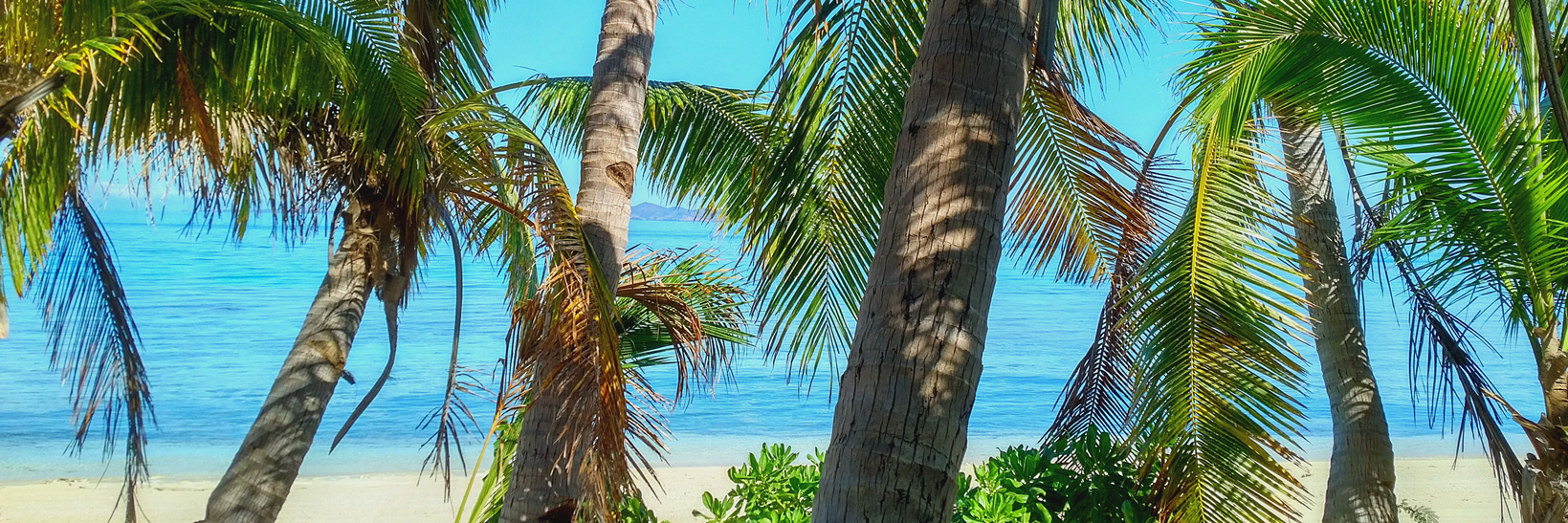
fiji

Where: Nadi, Kandavu (Mamanuca Group), Suva. Fiji, Oceania.
When: July 2017
What: Kayaking around an island, snorkelling, iconic Hibiscus flowers, municipal markets, colonial architecture, Sri Siva Subramaniya Hindu Temple, Land of the Sleeping Giant botanical garden.
How: Plane, taxi, walking, public bus, kayak, speedboat.
Wildlife spotting: Blue sea starfish, marine life underwater, gecko, skink lizards, herons, variety of tropical birds, baby Hawksbill Turtles.
Country counter: No.75
Illnesses or mishaps: Sustaining coral cuts which became infected by marine bacteria and required a course of antibiotics; suffering a bout of 'Fijian Belly' on my first night on Kandavu Island.
Fiji lies a five hour flight east off Australia's coast. In Australian terms, therefore, Fiji is merely a short hop across the Pacific and for this reason it's the destination of choice for Aussies, Kiwis and Americans (who themselves reside just on the other side of the International Date Line in Hawaii). Fiji is so far east it is as close to the International Date Line as it is possible to get, save for other smaller Pacific Island nations such as Tonga and American Samoa. My trip to Fiji therefore represents the furthest east I have travelled so far on my long-running journey around the world and is almost as far away from the place I grew up as it is possible to get.
Fiji, although a tiny country, feels vast being comprised, as it is, of no less than 332 islands. At the centre of this Oceanic archipelago is the main island of Vitu Levu, home to Nadi, the arrival point for most international visitors of these tropical isles, as well as the Fijian capital Suva. With so many islands to choose from, planning your Fijian adventure is taxing and so your experience of Fiji, good or otherwise, will largely come down to how much time you have had to piece together an itinerary before you jet off. Compounding the problem is the fact that Fiji's tourism industry is polarised with young hedonistic types up for a party at one end and family-oriented fayre at the other. Seeing as I fall into neither of these demographic groups, I found zoning in on what to do and where to go rather problematic, especially as this results in a binary choice between high-class luxury resorts at one end or squalid backpacker dorms at the other. I am not wasteful and abhor superfluous luxury but my days of roughing it in youth hostels are coming to an end. Any time preparing will be well spent and may just help you avoid landing on a hedonistic party island populated by nauseating adolescents mixing their blueberry and citrus flavoured vodkas and inevitably vomiting on the beach whilst photographing everything in sight. I suppose there are some places where you feel you've arrived just a little too late. Perhaps I'm twenty years too late where Fiji's concerned?
Online research quickly reveals that the heart of Fiji is not, counter intuitively, at its geographical heart but is to be found away from Vitu Levu. Island life is Fiji life, and so a desert island experience had to be part of my trip's mix. To come to Fiji and not stay on a postcard-worthy tropical island with green sculptural coconut palms, cobalt blue waters and white coral sands would be to not see Fiji at all.
Fiji, the country which once scared off Captain Cook with its deservedly fearsome reputation as being the "Cannibal Isles", and once suspended from the British Commonwealth for becoming known as "Coup Coup Land", has the honour of becoming my 75th country. Bula!
nadi
Most people see Nadi twice - once on arrival in Fiji and once leaving. Chances are, if you're flying to Fiji, this will be your port of entry. Despite having the country's largest and most modern airport, there isn't much to attract tourists here: Nadi, pronounced 'Nandi', is just the gateway to Fiji from where the majority of people transfer into paradisal oblivion for a week or so. Travellers with a few hours to spare at the airport find themselves taking a trip out to see the magical Sri Siva Subramaniya Hindu temple - the largest Hindu temple in the Southern Hemisphere. The Sri Siva Subramaniya is the archetypal Hindu temple, combining, as it does, elaborate and intricate carvings with unrestrained technicolour. Its central pyramid structure is adorned with statues of gods, kings and warriors rendered in sherbets, lemons, strawberries and limes - looking positively edible as a result. Hindu temples are the antithesis of other, more visually-restrained places of worship in other faiths, and for this reason they feel more welcoming and less austere. And, of course, a trip to Nadi's, and perhaps Fiji's, most striking building brings you face to face with a significant part of the country's history, namely that Indians, brought to the islands by Fiji's British colonial rulers as indentured labourers, now comprise well over a third of the population - and a source of ongoing ethnic tension in this Oceanic paradise. Whilst beautiful and mesmeric, this temple symbolises Colonial Britain's meddling in this part of the world.
Those with a little more time to spare pay a visit to the rather beautiful, and equally serene, Garden of the Sleeping Giant located at the foothills of the Nausori Mountains and one where jungle meets tropical greenhouse. It is a place where you can find a plethora of orchids, freaky-looking plants which look to have been taken straight out of central casting for a reboot of Day of the Triffids, as well as the iconic Fijian Hibiscus flower - the one worn over the ear by many Fijian women and, often times, men too. Add to this the fact that many Fijian men wear flowery shirts as well as a skirt-like garment called a suru and it's fair to say that men in Fiji cut a notable sight by western traditions of masculinity. Somehow in the West, men have become straitjacketed, dimmed by greys, blacks and whites, trapped in trousers and locked in by block colour - certainly no patterns and certainly no florals. Who made these rules anyway? Fijian men could certainly give the West a lesson in how to carry off masculinity, colour and floral patterns!

The technicolour Sri Siva Subramaniya Hindu temple at Nadi, arguably Fiji's most notable building.


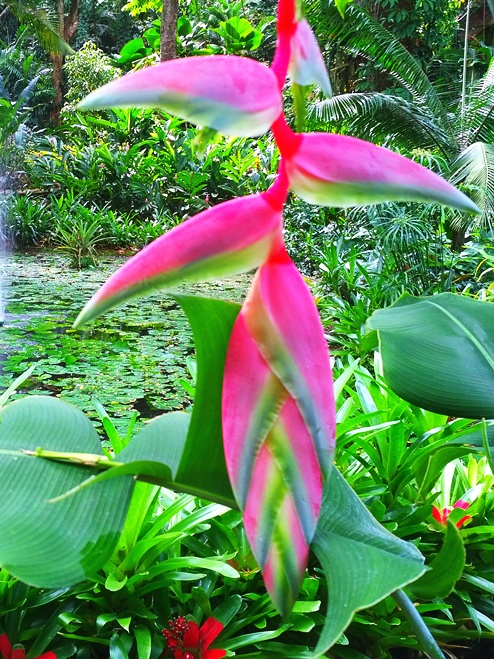
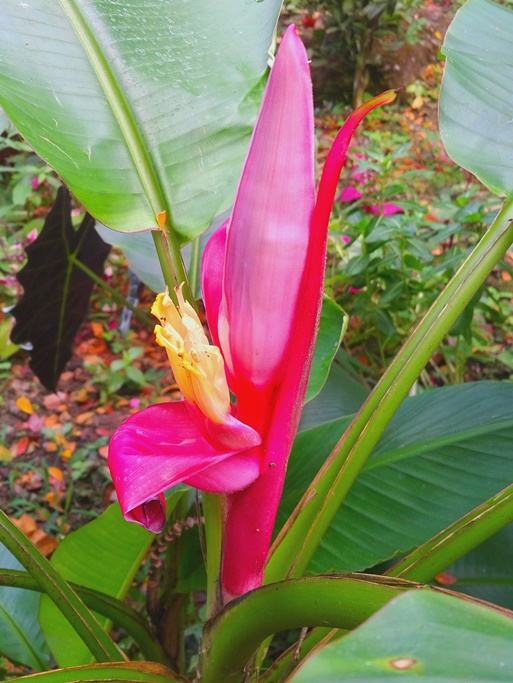
A selection of the plants, many indigenous to Fiji, in the Garden of the Sleeping Giant. Pretty and pretty incredible.
kandavu island
Kandavu is a small island in the Mamanuca group of islands 15 kilometres off the coast of Vitu Levu. Small does not mean insignificant for it was our little, and only, taste of quintessential Fijian island life. To market itself to tourists Kandavu also goes by the name of Bounty Island. Indeed, sometimes wishing to throw off the old colonial yolk, it is perhaps perplexing that many of Fiji's islands rekindle this age of explorers, missionaries, adventurers and colonisers with romanticised names like "Treasure Island", "Robinson Crusoe Island" and "Castaway Island". I prefer to use Bounty Island's Fijian name.
Access to Kandavu from Nadi came in the form of a speed boat. Well, when I say speed boat I use the term with some pretty emphatic inverted commas. It was a metal box with two jet-style engines bolted on at the back. What I mistakenly assumed would be a relaxing transfer to a tropical paradise turned into a watery rollercoaster at breakneck speed. Almost immediately after leaving Nadi Marina the waters became fierce and frightening. The boat lurched from one side to the other, heart-stoppingly flying into the air and crashing back down. The Lonely Planet Guide to Fiji advised to check for lifejackets when boarding. I did. There were none. It was all I could do to run my left hand under the seating to grip the bar underneath and use my right to clasp the underside of the seat I was on. Salty South Pacific sea water sprayed all over the seats and all over me; this mere twenty-minute boat journey felt much longer. I began to regret scoffing the two Kit-Kats at the airport, fearing I may be seeing them again sometime soon! Then Kandavu's shoreline, with its Bure-style huts and coconut palms, honed into view; it was at this point we stopped and dropped anchor for our boat would damage the coral reef which encircles the island. We had to wait for another smaller boat to meet us; essentially a transfer from the transfer. Engines off and moored just shy of the Kandavu coast, we bobbed and wobbled for twenty minutes or so - long enough for one half of our crew, grinning from ear to ear, to drop a line from the back of the boat in the hope of catching a fish. He didn't ("They have all swum away...for a wee" he grinned). Then a second tin can arrived to complete our journey to paradise. We were bundled from boat one to boat two mid-water along with our rucksacks, a new toaster, new microwave, two large cartons of cornflakes... So nice to see that our expensive transfer from the airport was doubling up as an opportunity for our resort owners to restock their cupboards and replace their malfunctioning white goods! At least I knew what was on the menu for breakfast the following morning. We were greeted on the shoreline, blue waters lapping at the white coral beach, in the traditional way by a man in a sulu (skirt) wearing a flowery top, an Hibiscus flower over his ear and singing along to his guitar with an emphatic "Bula!" as the rousing, predictable climax. As soon as we were both safely disembarked from our baked bean tin, the warm welcome quickly evaporated and his attention switched to the comestibles and goods to be unloaded from the boat. I suspect his "Bula!" was, in reality, a greeting to the eagerly awaited goods on board rather than to us. But perhaps that's just the cynical Brit coming out in me.
We staggered ashore, regaining our land legs, and into Bure #11, a beachside hut (and I mean hut) complete with its own damaged decking, two very sad looking wicker chairs, a hammock tied between a tree and a post, and, I have to say, the best and most iconic palm tree on the island: perfectly formed, perfectly sized and perfectly angled. This was our little slice of paradise and for once my travels would not be characterised by worries relating to whats, wheres, hows, whens and ifs. I was on Fiji time now. There was nothing to do - except relax. This was enforced relaxation - Fiji was new terrain for me indeed - literally but also metaphorically.
Fortunately (or unfortunately depending on your opinion) our Bure, each evening, was the preferred destination for two rather large geckos which took to suckering themselves to the hut's ceiling beams in the hope of catching the range of flies which had been attracted by the lurid white of the strip light. It was a little disconcerting to fall asleep knowing there were two lizard-like gobblers eating directly above my head and which, on occasion, would hiss at their success, or otherwise, in catching their target. They had also proved themselves particularly adept at excreting onto our bed from a great height, the brown splodges in clear evidence the following morning. They were, however, very Fijian and had more right to be on the island than I, so decided to let them be. However, quite what creature it was I heard rustling about in our bedroom bin at two in the morning is anyone's guess. Geckos are far too dignified to be rolling around in a bin and so my thoughts turned to darker possibilities: rats? Once again, I thought it best to leave it be and pretend it wasn't there. Whatever it was.
Above water, Kandavu is beautiful and many people's perception of what paradise is - but underwater Kandavu is magical. Taking full advantage of the free loan of snorkelling equipment from the resort's boat shed and a newly-purchased GoPro underwater camera, we headed out to the coral reef to see what lurked beneath the wobbly cobalt of the South Pacific. Snorkelling took a bit of getting used to but once I'd mastered the art of breathing only through my mouth and sounding like an aquatic Darth Vader, I began to enjoy this colourful coral world with its population of fish of all shapes and sizes. There were also sea cucumbers and, amazingly, deep blue starfish the size of my hand. The stinging coral cuts to my feet, which later became infected with marine bacteria and required both a course of antibiotics and anti-fungal cream to get rid of, were the relatively low price to pay for witnessing these underwater marvels. Kayaks were also free to borrow and so our final afternoon was spent kayaking around the entire circumference of the island; lazily we went in the direction of the current rather than actually enter the realm of real physical exertion. We were on holiday after all.
Unfortunately I never made it out of paradise without having an obligatory dose of 'Fijian Belly'. With stomach pains and coral cuts in tow we were serenaded off of the island with a mournful ditty from Berry the proprietor; a tune so evocative that it almost made me want to turn the boat round and go back. My stomach was in no mood to be thrown about again on the speedboat of death but, alas, it had no choice. We were Suva bound...

Our bure came complete with our very own hammock, strung up between a tree and a post, with an evocative view out across the Pacific Ocean.

In my opinion our bure faced the best palm tree on the island. Perfectly formed, perfectly sized and perfectly angled. Perfectly paradisal.

The earthy colours of a traditional shelter made from coconut palm leaves contrasts with the coral white beach, clear blue sky and cobalt-colour sea.
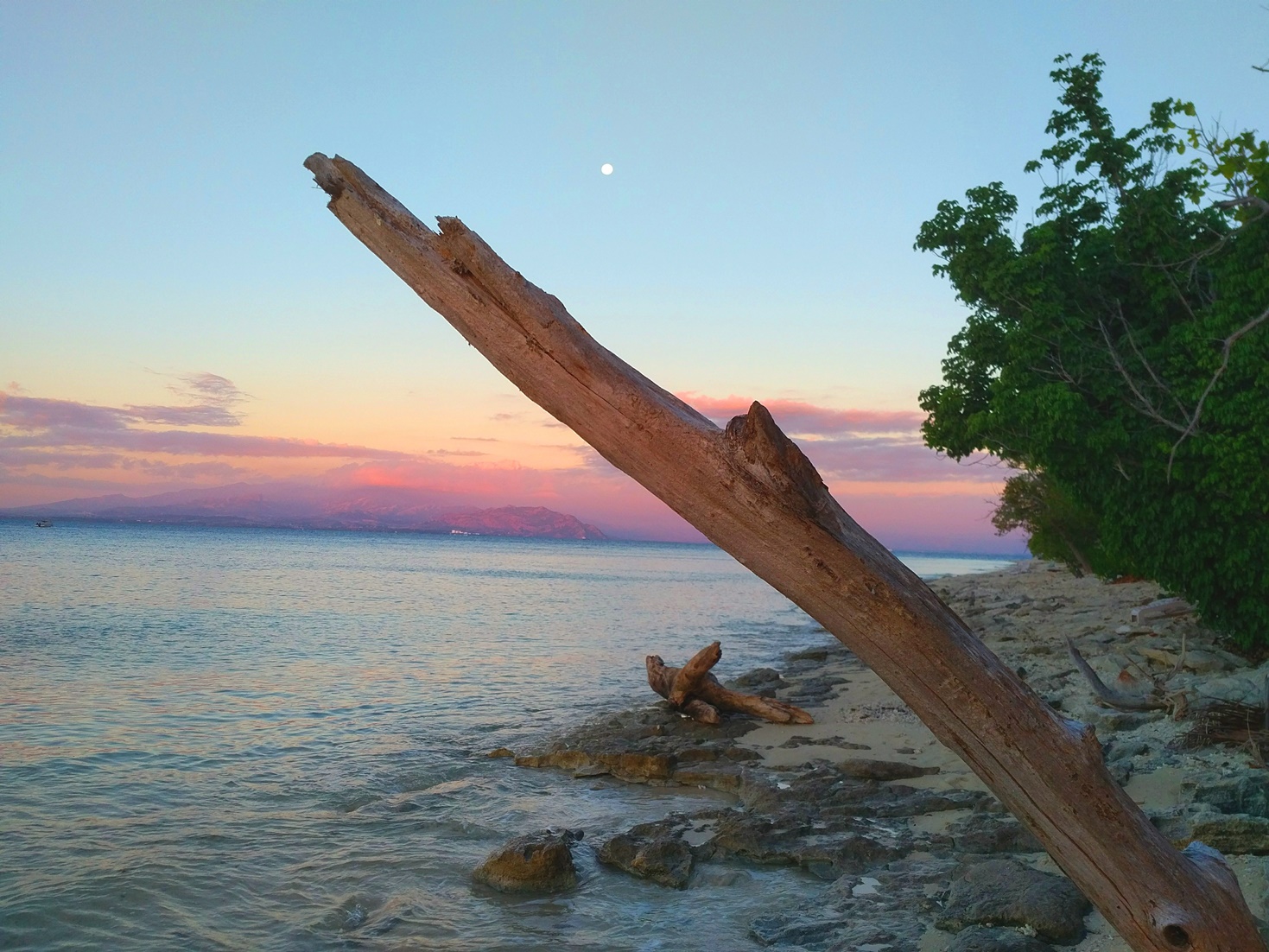
A sculpturally satisfying branch juts out into the Pacific Ocean at sunset complete with moon.
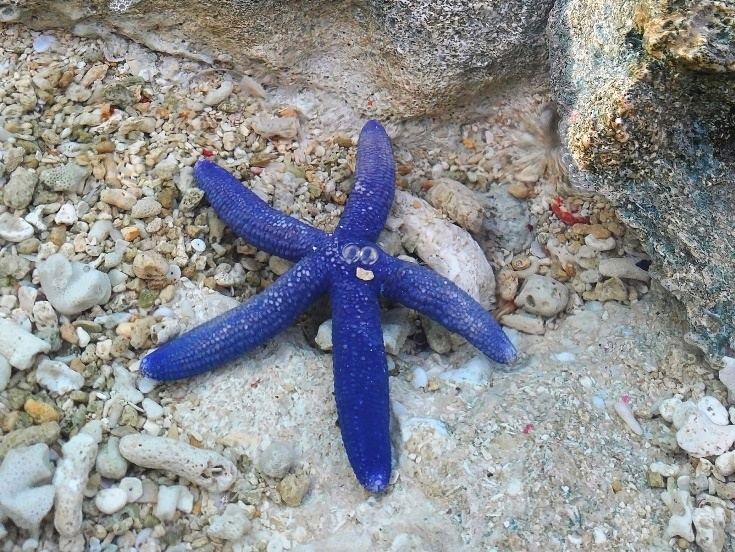
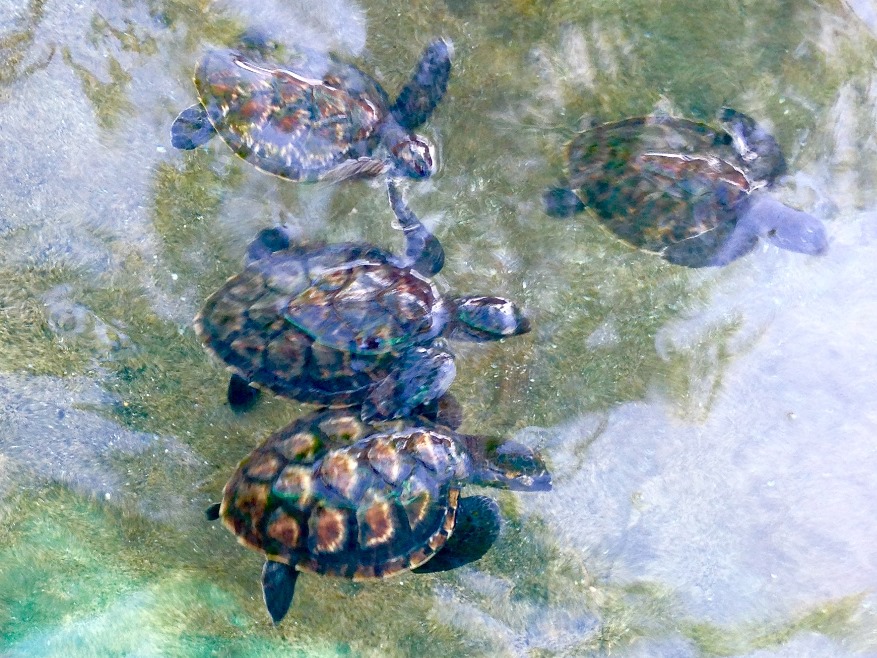
Wild Kandavu: two sculpturally positioned herons beak to beak on driftwood; a blue starfish with two air bubbles and a piece of debris on its centre creating a smiling face; a gecko feeding on the rafters above our heads in the bure; Kandavu is also home to a small Hawksbill Turtle sanctuary.
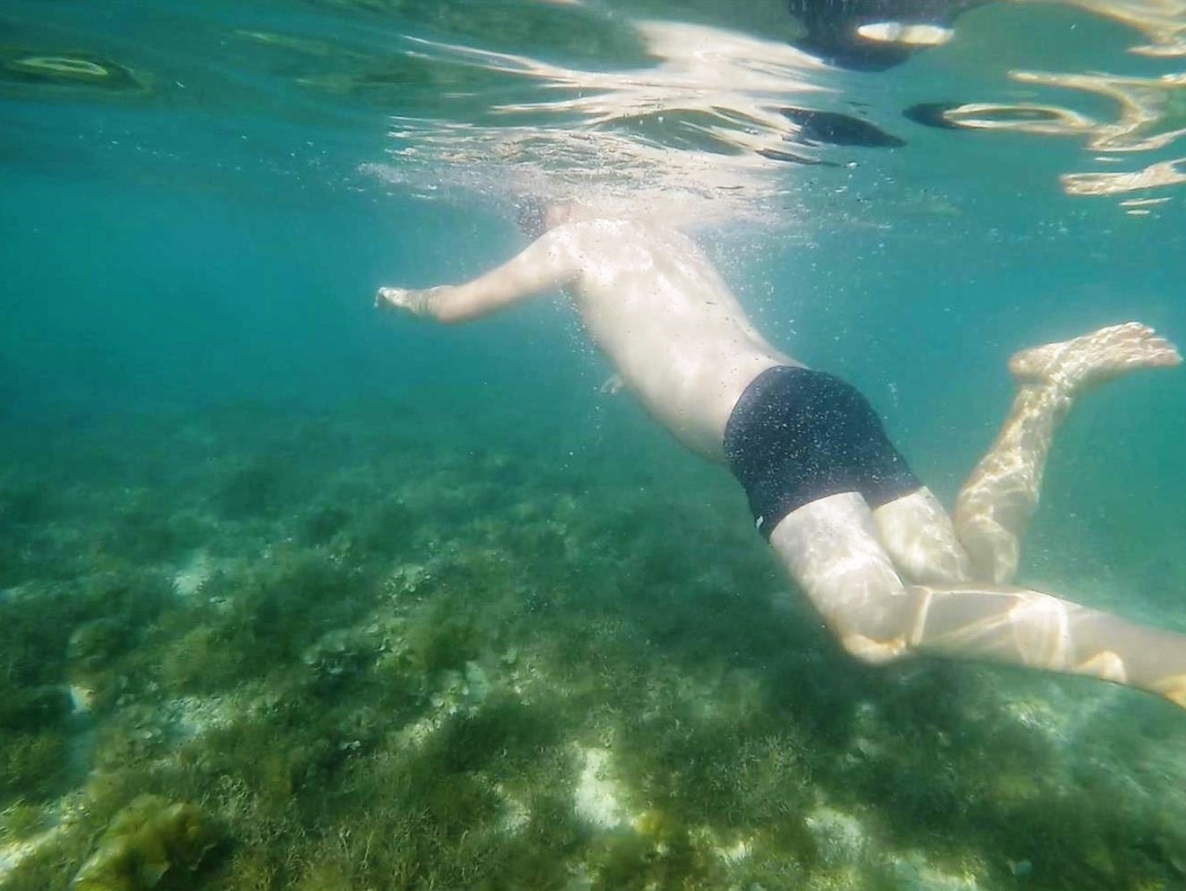
Snorkelling on Kandavu's coral reef with sea cucumbers and starfish aplenty! GoPro still.
Kayaking around the circumference of the island.
suva
Our journey half way around Fiji's main island Vitu Levu, from Nadi in the north west to Suva in the south east, was courtesy of the public bus called Sunbeam which drove along the very colonially-named Queen's Road (not to be confused with the King's Road on the eastern side of the island nor Princess Road in its centre). The only connection between this romantically-named bus service and the reality, as far as I was concerned, was the unrelenting heat on the inside of the bus which had many a local Fijian, and me, dripping with sweat. The four hour road to Suva must go down as one of the worst bus journeys I have ever endured: there were more people than seats, the seats themselves were tiny, the heat unrelenting, the aircon utterly incapable of airconning and, to compound the discomfort, the worst B movies possible were played on the TV screen at maximum volume. Still, what do you expect for $15FJD (£5)? We could have flown on Fiji Airways for ten times the price and arrived within half an hour but the intention was to at least try to see a little of the real Fiji, one that went beyond the capital city and Western-geared resorts.
Despite the stifling and claustrophobic nature of the journey itself, the scenes out of the window went some way to justifying our decision to go local and get the bus, which meandered itself passed a series of traditional Fijian villages revealing something of how normal Fijians live. Unfolding before me, captured in the perfect rectangle of my bus window, was a living, breathing portrait of life on Fiji - alas whizzing by all too quickly to capture on camera but evocative and meaningful to behold nonetheless. Villages of no more than twenty single storey dwellings constructed from a range of scavenged materials, mainly corrugated metal, and painted in a range of bright colours, were arranged around a shared grassy area, often with a humble Methodist church as the focal point. Tellingly there were no fences between each property; this common feature of neighbourhoods around the world is considered exceptionally rude in Fiji. Fijians realise that the building of physical walls only results in a whole host of other, invisible walls springing up too. Instead, neighbours share the land around their homes with communal washing lines punctuated by colourful clothing completing this picture of fairy tale, idyllic poverty. The word community is so overused in the West that it has lost all meaning. These villages give you the chance to see what a real community looks like: one based on people, connections, warmth and sharing. In-between these pockets of community, roadside shacks sold mangoes and coconuts, children made their way home from school in their striking purple uniforms and a lumpy, Jurassic-like landscape whirls by. Magical.
Suva is a capital city on a very human scale and is not geared towards receiving foreign travellers. There is no tourism information office, no tourist-friendly map available and just a handful of hotels to choose from. Mountains surrounding the city ensure grey skies and frequent drizzle, making it a world away from the sun-kissed paradisal beaches of the island resorts. It's no surprise that many tourists avoid Suva altogether. On walkabout it was clear we were pretty much the only white faces about. It was inevitable, then, that we attracted the attention of locals and their friendly shouts of "Bula". The fact is that tourism almost completely bypasses Suva and so it's a bit of a novelty to Suvians that you've made the effort (or is that error?) to visit their city. Locals were inquisitive. Indeed, we were quizzed many times about where we were from (and unlike in many countries I have been, this was not a superficial prelude to a hard sell). The fact is that Suva has very little to offer in terms of sights: the attraction is the sum of its parts rather than any one landmark so a photographer's dream this was not. Suva's main landmark, as far as I was concerned, were the Fijians and Indo-Fijians themselves who have made this insubstantial capital city one of colour, character and kindness.
A meander through the city's municipal market, among the biggest in the South Pacific region, was a delightful experience, a place packed full of people whose characters were as colourful as the tropical fruit and vegetables they were selling. I asked a few stallholders if I could take their photograph and all were more than happy to oblige, putting on their biggest smiles for me and all the while bulas emanated from stallholders all around. I learned from my experience in Tajikistan that the indoor market, called a bazaar in Central Asia, is the perfect place to get up close and personal with local people without the travel industry mediating, modulating or even falsifying the experience for you. In travel I search for authenticity, things which define or characterise the place I am in. Sometimes it's the architecture, sometimes it's a street scene, sometimes it's a quirky example of signage - and sometimes it's the faces of the people right in front of you. Welcome to Suva, the Fijian capital...

The early evening view across the waters of Suva Harbour. You can see the clouds Suva is famous for and the butt of many a Fijian joke.

Two vintage public buses, distinctively windowless, drive along the harbour just as the sun begins to set. Of an evening some are illuminated by fairy lights and play Reggae music rather loudly. Fun.

A group of Fijian women selling local produce outside the Municipal Market happily pose for a photograph, full of smiles. Such warm people.

A Fijian woman, from whom I bought some bananas, poses for a photograph. This is the kind of warmth you can be assured of in Fiji. Simply wonderful.
travel tips, links & resources
- If you plan to go snorkelling and, let's face it, why wouldn't you, then it's wise to pack plasters and iodine for the almost inevitable coral cuts you will sustain. I wasn't to know it at the time, but cuts on coral can be very serious.
- Invest in a GoPro: much of what you will probably get up to in Fiji involves being on or under water. If you have been thinking of buying one, and are going to Fiji, now's your chance to take the purchase plunge.
- Make sure you do your research and decide what kind of island(s) you wish to spend time on. Chances are there is an island for you but be sure to read online reviews before booking as these will often draw out the pitfalls not mentioned in the resort's official marketing material.
- Pack your mosquito nets. Some accommodation providers will offer you them but there is no guarantee of this. It is also worth bearing in mind that a common feature of cheaper hotels is the old-fashioned lever-operated slatted windows. Not exactly mosquito proof.
- Whilst malaria isn't present in mosquitoes in Fiji, Dengue Fever is. The disease is carried by daytime-biting mozzies so cover up and slap on plenty of repellent (invest in a quality product with at least 70% DEET) from the moment you arrive. I was bitten during my transfer from the airport. I had been in Fiji for less than half an hour!
- In Suva taxi drivers use their meters and travel is cheap (although some drivers try to 'forget' to put theirs on). In Nadi and other places around Vitu Levu meters aren't even installed so be sure to agree a price before setting off.
- Take some water purification tablets with you - especially if you're staying in a resort. Resorts, many of which have you as a captive audience, will charge handsomely for bottled water. On Bounty Island we boiled the tap water, purified it with a tablet and chilled it in our room's fridge.
- It's worth taking some all-round travel antibiotics like Ciproflaxin. Fiji is renowned for giving people upset stomachs - no matter how cautious you think you're being. I had one sleepless night with 'Fijian Belly'.
you may also like
